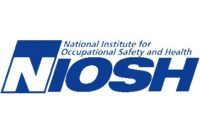The National Institute for Occupational Safety and Health (NIOSH) has published a new resource to help employers and workers reduce hazards associated with lead pipe removal and replacement.
Workplace Solutions: Reducing Workers’ Lead Exposure during Water Service Line Removal and Replacement discusses the potential for lead exposure when workers replace lead service lines (the pipes that carry water to homes and businesses) and provides recommendations to reduce lead exposure.
“Recent efforts to improve municipal water systems and protect public health by removing and replacing lead water service lines in the U.S. potentially exposes workers to lead-contaminated pipes and soil,” said NIOSH Director John Howard, M.D. “It’s important for employers and workers to be aware of the potential for lead exposure and take steps such as those outlined in NIOSH’s Workplace Solutions document to protect the safety and health of all workers involved in lead pipe replacement activities.”
Many types of workers can be exposed to lead through various activities. Workers at risk may include managers, line supervisors, or field workers such as those from plumbing companies, city utilities, or construction companies who work with water lines. Working in excavated pits, cutting or handling lead pipes, or digging with heavy equipment or a shovel may expose workers to lead.
When workers are exposed to lead at the work site, they may unknowingly carry it home on their skin, clothes, or personal items such as cell phones, keys, and boots. This can lead to potential lead exposures for other household members.
NIOSH recommends strategies to reduce workers’ exposure to lead based on the hierarchy of controls. The Workplace Solutions document outlines NIOSH’s recommendations for employers to reduce lead exposure such as:
- Developing a written lead monitoring and control program which may include a testing protocol, hazard control program, and job hazard assessment for tasks that may expose workers to lead
- Monitoring airborne lead exposures
- Providing portable high efficiency particulate air (HEPA)-filtered vacuums to clean work vehicles
- Improving training, testing, and housekeeping
For workers, NIOSH provides recommendations for improved work practices, such as cleaning surfaces and avoiding bringing personal items into contaminated areas and using personal protective equipment to help reduce their lead exposure.
See Workplace Solutions: Reducing Workers’ Lead Exposure during Water Service Line Removal and Replacement for complete, detailed recommendations.
NIOSH’s new resource is based on a 2019 health hazard evaluation among city water department employees who were replacing water service lines. The air samples collected were below occupational exposure limits. NIOSH investigators found lead on samples collected from workers’ hands and work gloves. Investigators also found lead on surfaces inside trucks and in the locker room. Find more information about lead in the workplace on the NIOSH website.
NIOSH is the federal institute that conducts research and makes recommendations for preventing work-related injuries, illnesses, and deaths. For more information about NIOSH, visit www.cdc.gov/niosh/.








